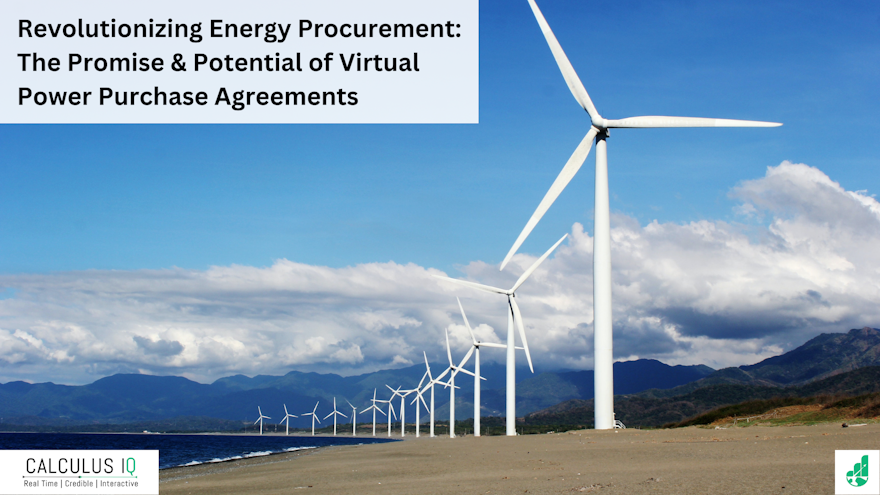In the quest for achieving net-zero targets and promoting sustainable energy practices, Virtual Power Purchase Agreements (VPPAs) have emerged as a prominent and favored avenue for large electricity consumers worldwide. This innovative arrangement enables these consumers to support renewable energy capacity beyond direct electricity procurement.
While the concept of VPPAs holds immense promise, it's crucial to understand their intricacies, their distinction from traditional Power Purchase Agreements (PPAs), and their potential in the Indian context.
What are Virtual Power Purchase Agreements?
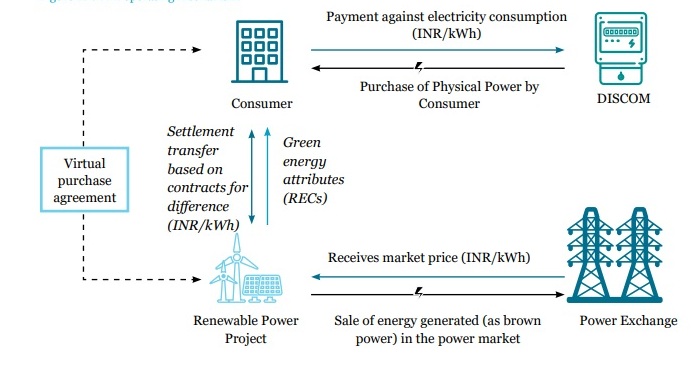
Figure 1: How does VPPA works in India (Source: Amber Media)
Virtual Power Purchase Agreements serve as a bridge between renewable energy generators and large electricity consumers. They allow consumers to financially support renewable energy projects without physically taking ownership of the generated power. In this arrangement, an Independent Power Producer (IPP) establishes a renewable energy project and enters into a Contract for Difference (CfD) with a sustainability off-taker.
Under this contract, any surplus revenue earned from selling electricity in the open market above the agreed strike price is transferred to the off-taker. Conversely, if market prices fall below the strike price, the off-taker compensates for the difference.
Differentiating VPPA from Direct PPA
While both VPPAs and Direct PPAs share the goal of sourcing renewable energy, their mechanisms and outcomes vary significantly:
Direct PPA:
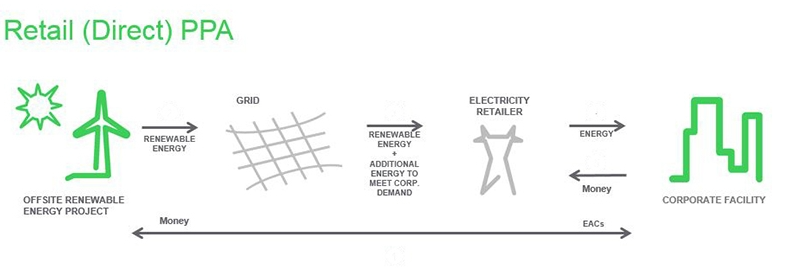
- Involves physical delivery of electricity from the generator to the consumer's operations.
- Requires the consumer and generator to be located within the same grid region.
- Can only be adopted by companies with operations in deregulated retail states.
- Offers straightforward control over the source of energy used for operations.
Virtual PPA:
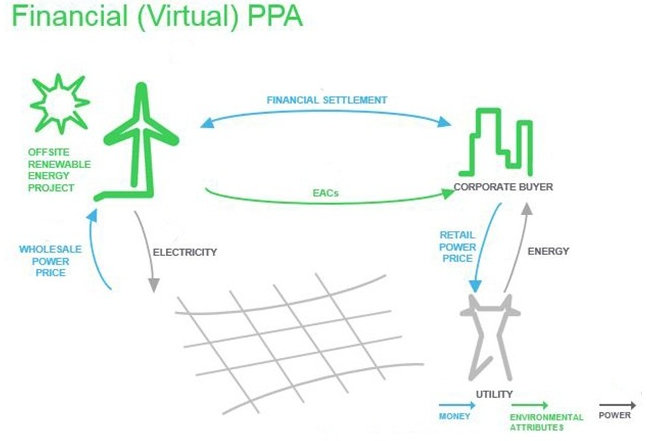
- Does not involve physical delivery of electricity; instead, it's a financial settlement.
- Offers more flexibility in sourcing renewable energy across multiple grid regions.
- Allows for transacting without affecting utilities or wholesale markets.
- Mitigates technical and operational risks, as electricity delivery is not involved.
Virtual PPA and India
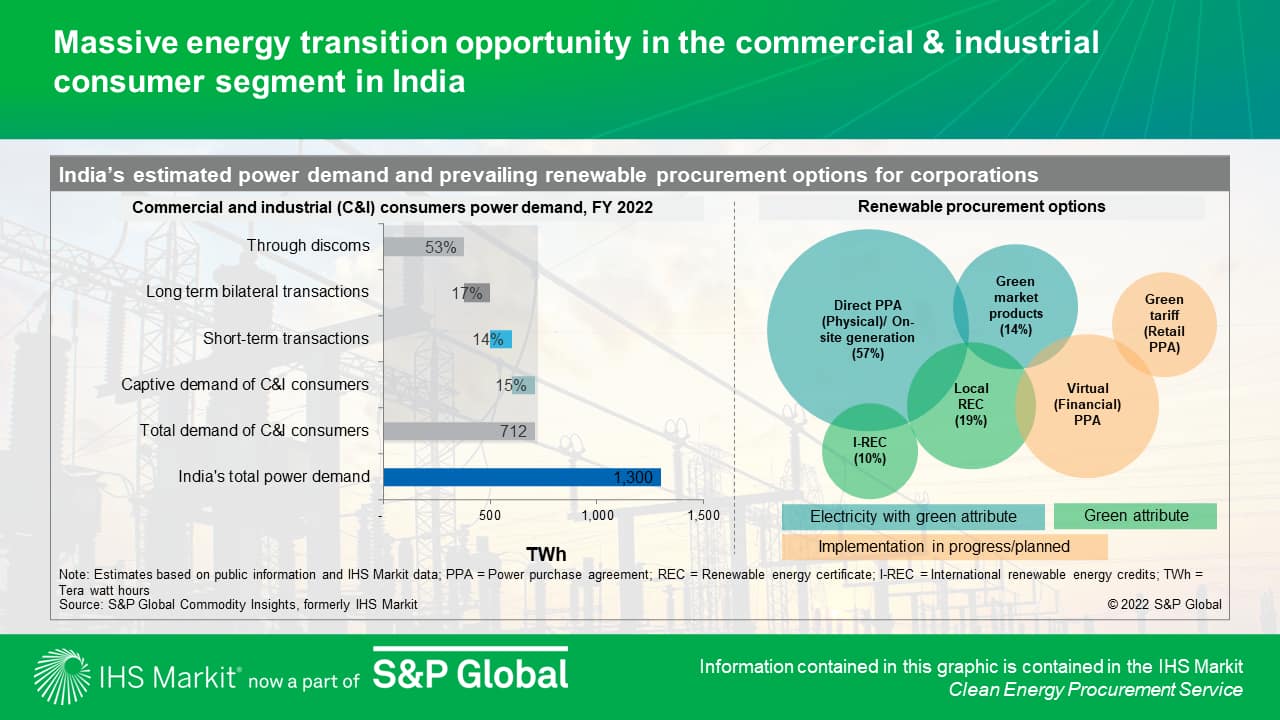
Figure 2: VPPA and DPPA as a renewable procurement option in India (Source: IHS Markit)
Despite India's potential to become a hub for VPPAs due to its low-cost renewable electricity production and a robust electricity market, actual adoption has been slow. Regulatory uncertainties and issues surrounding jurisdiction have been major obstacles. However, recent resolutions indicate that regulatory hurdles are no longer a concern.
Regulatory Clarity:
- VPPAs do not fall under the jurisdiction of either CERC (electricity regulatory) or SEBI (securities regulatory) in India.
- Being a derivative contract, VPPAs do not involve physical delivery or tradeable contracts.
- Consequently, they are outside the purview of regulatory oversight.
VPPA Advantages:
- Additionality: VPPAs ensure the development of additional renewable capacity, contributing to sustainability goals.
- Supporting Growth: Allows companies to support renewable energy growth without owning and managing physical assets.
- Carbon Emission Reduction: Offsets energy consumption, reduces carbon footprint, and aligns with sustainability targets.
- Flexibility: Enables procurement across multiple locations without affecting existing energy supply contracts.
VPPA Challenges:
- Market Fluctuations: Exposure to market price fluctuations of renewable energy generation locations.
- High Upfront Costs: Complexities and upfront expenses, making it more suitable for larger organizations.
- Dependence on Third-Party Providers: Outsourcing energy procurement could lead to dependency on third-party providers.
- Limited Flexibility: May lack the control and flexibility of owning and operating renewable energy assets.
- Accounting Implications: Handling VPPAs within accounting frameworks, complying with financial standards.
India's National Green Hydrogen Mission, which aims to boost green hydrogen production, aligns with the VPPA concept. As India pursues energy independence and sustainability, VPPAs can play a pivotal role.
By offering flexibility in energy procurement, enabling widespread renewable energy adoption, and reducing carbon footprints, VPPAs can transform India's energy landscape.
Conclusion
In the dynamic landscape of sustainable energy transformation, Virtual Power Purchase Agreements (VPPAs) have emerged as a beacon of progress, illuminating a pathway towards global net-zero aspirations. Through this innovative mechanism, large-scale electricity consumers have gained the ability to transcend traditional boundaries and contribute to renewable energy growth in profound ways.
As we delve into the nuances of VPPAs and their divergence from conventional Power Purchase Agreements (PPAs), a clearer picture emerges of their potential impact on the energy industry. VPPAs facilitate a financial relationship between renewable energy generators and consumers, enabling support for clean energy projects without necessitating direct power ownership. The symbiotic Contract for Difference (CfD) framework reflects the dynamism of this arrangement, redistributing revenues based on market fluctuations while driving sustainability goals.
Distinguishing itself from Direct PPAs, the virtual variant decouples physical energy delivery from financial settlement, unlocking avenues for enhanced flexibility and reduced technical risk. Despite this transformative potential, the Indian context has witnessed a measured pace of VPPA adoption due to regulatory intricacies. However, regulatory clarity now emerges as a guiding light, signaling a new era of opportunity.
While challenges exist, from market fluctuations to accounting intricacies, the undeniable advantages of VPPAs - additionality, supporting growth, carbon emission reduction, and flexibility - fuel their momentum. This resonates powerfully with India's ambitious National Green Hydrogen Mission, underscoring the role of VPPAs in the nation's sustainable energy journey.
As the world embarks on a collective mission towards cleaner energy, VPPAs stand poised to play a transformative role, driving change by transcending boundaries, fostering sustainability, and sculpting a greener energy landscape for generations to come.
![[object Object]](/lib_ubcXiSgTRmkLVyyT/k8w528b9mk1p20to.png?w=400)
